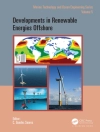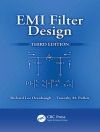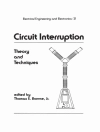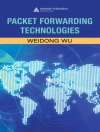This book highlights selected papers presented during the bi-annual World Renewable Energy Network’s 2019 Med Green Forum. This international forum highlights the importance of growing renewable energy applications in two main sectors: Electricity Generation and Sustainable Building. The papers highlight the most current research and technological breakthroughs illustrating the viability of using renewable energy to satisfy energy needs. Coverage includes a broad range of renewable energy technologies and applications in all sectors – electricity production, heating and cooling, agricultural applications, water desalination, industrial applications, and transport.
- Presents leading-edge research in green building, sustainable architecture, and renewable energy;
- Covers a broad range of renewable energy technologies and applications in all sectors;
- Contains case studies and examples to enhance practical application of the technologies presented.
Mục lục
Chapter 1. Refurbishment Of Goris Old Bath Building As Tool For Historic Urban Environment Green Traditions Rehabilitation.- Chapter 2. Climate Adaptation Action: the Role of Clean Energy and Strategic Action Plans of South Mediterranean Cities.- Chapter 3. Smart And Sustainable Urbanism With Identity In Mediterranean Cities.- Chapter 4. Climate Action: Urban Farming as an Innovative Tool for Regenerating Cities to be Sustainable – Case of the City of Conegliano, Italy.- Chapter 5. Future Cities for Climate Action: Automated Code Compliance Checking in Reference to Energy Efficiency Building Regulations.- Chapter 6. Urban spaces for playing in thermal comfort conditions. A case study.- Chapter 7. The diurnal and nocturnal aspects of Urban Heat Island during the four seasons – Case of Casablanca.- Chapter 8. Green Healthcare System: Main Features In Supporting Sustanability Of Healthcare System -An Evidence Based Review.- Chapter 9. Urban Grapvine – Visions of Regenerative Multi-Family Housing in Washington, DC.- Chapter 10. Towards Resilient Cities: Improving Unplanned Urban Areas – Strategic Environmental Assessment and Upgrading Guidelines in Developing Countries.- Chapter 11. Paving the Way towards Zero Energy Hospitals in the Mediterranean Region.- Chapter 12. Vernacular Elements as Indicators for Sustainable Interior Environment: Housing in Jordan.- Chapter 13. Green Sustainable Regional Development And Digital Era.- Chapter 14. The role of the architectural survey in the sustainable refurbishment of the historical building heritage.- Chapter 15. People and Place: identity survey and responsible design for architectural resilient regeneration process.- Chapter 16. Energy retrofit cost-optimal design solutions in social housing: the case of three tower buildings of the Eighties.- Chapter 17. Enhancing Energy Consumption using BIM: A Case Study of Egyptian Palace.- Chapter 18. Passive Design Strategies Of Colonial Mosques In Malaysia.- Chapter 19. Winery and oil-factory recovery and regeneration in Veglie: bioclimatic and sustainable principles._ Chapter 20. Sustainable construction methods and materials in hot arid climatic region of Iran.- Chapter 21. Impacts of Exploiting Nano-coating on Buildings’ Façades to Improve Air Quality in Megacities, Mitigate Climate Change and Attain Liveability.- Chapter 22. External insulation systems for buildings with complex façades in urban historic centers.- Chapter 23. European First Recyclable Façade System With Reclosable Fastener Fixation – Research Development, Grants Of Patents, Pre-Certification Testing’s And Product Publication Of Façade System Stosystain.- Chapter 24. Impact of traditional architecture on the thermal performances of building in South Morocco.- Chapter 25. Assessing optimal U-value in residential buildings in temperate climate conditions considering massive dynamic simulation and statistical uncertainty.- Chapter 26. Evaluation of multifunctional aspects of agreen roof in mitigating the negative effects of urba nization in Mediterranean environment.- Chapter 27. Solar And Wind Energy Will Supply More Than 50% Of World Electricity.- Chapter 28. Feasibility Study of a Low Carbon House in Tabriz, Iran.- Chapter 29. The development of Renewable Energy in Buildings in UAE.- Chapter 30. Green Buildings to Approach Sustainable Buildings by Integrating Wind and Solar Systems with Smart Technologies.- Chapter 31. Smart active envelope solutions, integration of Photovoltaic/Thermal Solar Concentrator in the building façade.- Chapter 32. A Developed Slide Mode Control Strategy Applied To Pv Pumping System.- Chapter 33. Analysis of wind energy potential inside a tunnel located on the highway.- Chapter 34. The Potential of Solar Thermal in Europe.- Chapter 35. Urban regeneration with rooftop farming pilot projects.-Chapter 36. The Imitation Game: the urban sustainability game as an experience of participation, knowledge, evaluation and project sharing.- Chapter 37. Efficient energy conversion contribution in urban area transition toward smart cities.- Chapter 38. Short Considerations on Urban Dynamics.- Chapter 39. The Role of Urban Farming in Revitalising Cities for Climate Change Adaptation and Attaining Sustainable Development: Case of the City of Conegliano, Italy.- Chapter 40. Comfortable places for moving and rest along cycle paths.- Chapter 41. Energy auditor and building certification Three school buildings case studies in Florence, Italy.- Chapter 42. Fallacies And Misunderstandings About Global Warming.- Chapter 43. The Role of Urban Farming in Revitalising Cities for Climate Change Adaptation and Attaining Sustainable Development: Case of the City of Conegliano, Italy.- Chapter 44. Climate Adaptation Action: the Role of Clean Energy and Strategic Action Plans of South Mediterranean Cities.- Chapter 45. Extreme Design: Preparing for a Different Future.- Chapter 46. Energy and ecology efficiency as a chancefor cultural heritage.
Giới thiệu về tác giả
Dr. Ali Sayigh is Chairman and Founder of the World Renewable Energy Congress and Council; Director General of World Renewable Energy Network (WREN); Chairman and Founder of the Arab Solar Energy Society; and Past Chairman of the UK Solar Energy Society. Dr. Sayigh was recently elected to chair the Iraqi Energy Institute, and he actively consults on renewable and sustainable energy issues for a number of international organizations, including UNESCO, ISESCO, UNDP, ESCWA, & UNIDO. Dr. Sayigh was Director of Solar Seminars at ICTP Trieste, Italy from 1977-1995; Professor of Solar Energy at King Saud, Kuwait, and Reading Universities from 1969 to 1994, and Professor of Engineering at the University of Hertfordshire from 1994 to 2004. He was the founding expert in Renewable Energy at AOPEC. He is Fellow of the Institute of Energy; Fellow of the Institution of Electrical Engineers; and Chartered Engineer. He has published more than 400 papers and has contributed to and editedmore than 30 books. He has been Editor and Editor in Chief of several international journals including Renewable Energy and the International Journal of Environmental Sciences and Technology and Editor-in-Chief of the Major Reference Work Comprehensive Renewable Energy. He is fellow of many societies including The Royal Society of Art












